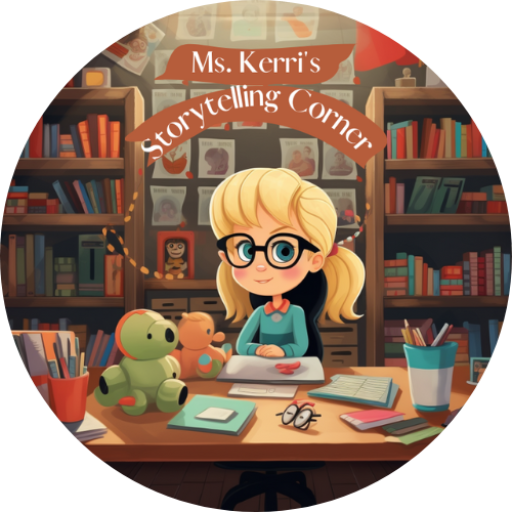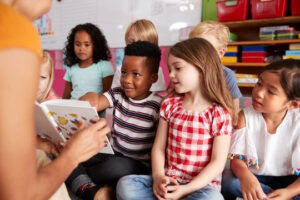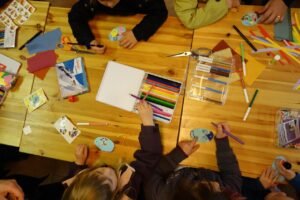What Does A Preschooler Learn?
Preschoolers are at a crucial stage of development where their minds are like sponges, absorbing knowledge and experiences at a rapid pace. This article explores the wonders of a preschooler’s mind and the adventures of learning that shape their early years.
Key Takeaways
- Preschoolers learn through imaginative play, fostering creativity and cognitive development.
- Exploring the world around them helps preschoolers develop a sense of curiosity and wonder.
- Learning colors and shapes aids in cognitive and sensory development.
- Building social skills through play and interaction with peers is essential for preschoolers.
- Language development plays a crucial role in communication, vocabulary expansion, and storytelling abilities.
The Wonders of a Preschooler’s Mind
Imagination Runs Wild
In the realm of tiny tots, dragons are real and the floor is, without a doubt, molten lava. Preschoolers’ imaginations are turbo-charged powerhouses, where a cardboard box isn’t just a box—it’s a spaceship, a time machine, or a pirate ship sailing the seven seas. With imagination, these little adventurers can transform the mundane into the magnificent, embarking on epic quests from the comfort of their playroom.
- A stick becomes a magic wand, granting wishes and battling beasts.
- Blankets drape over chairs to forge secret hideaways and grand castles.
- A simple puddle morphs into an ocean, with each splash a leap into a new world.
Imagination is the key that unlocks the boundless potential of a preschooler’s mind. It’s the spark that ignites a lifelong journey of discovery, learning, and success.
By nurturing this creative spirit, we lay the foundation for a future where anything is possible. We’re not just building castles in the air; we’re constructing the architecture of tomorrow’s innovators and dreamers. So let’s celebrate each whimsical thought and encourage every fantastical tale—after all, today’s pretend play could be the first step towards tomorrow’s real-world triumphs.

Learning Through Play
In the whirlwind world of a preschooler, playtime is prime time for learning. It’s not just about the giggles and the mess; it’s a serious business. Blocks become skyscrapers, puzzles turn into quests for the missing piece of the universe, and every dress-up costume is a gateway to a new realm.
- Dress-up: Unleash the superheroes and princesses.
- Puzzle-solving: A quest for the curious minds.
- Block-building: Skyscrapers one moment, a zoo the next.
Play is the brain’s favorite way of learning. It’s where the magic happens, where neurons fire up and skills sharpen. No textbooks required, just a hearty dose of imagination and the freedom to explore.
Through the lens of play, preschoolers navigate the complexities of social interactions, learn the art of negotiation, and get a crash course in the laws of physics. They’re not just playing—they’re preparing for life. And let’s be honest, who wouldn’t prefer a sandbox summit over a boardroom meeting?
Curiosity Knows No Bounds
In the boundless playground of a preschooler’s mind, every corner hides a new mystery, every shadow a story untold. Curiosity is the compass that guides these tiny explorers through jungles of blankets and mountains of cushions. It’s a magical world where the ‘whys’ and ‘hows’ rain down like confetti, and every answer is a stepping stone to the next big question.
- Why is the sky blue?
- How do ants carry crumbs?
- What makes the wind blow?
These aren’t just questions; they’re tiny keys unlocking the vast universe of knowledge, one giggly ‘aha!’ moment at a time.
The quest for understanding is relentless, and the appetite for discovery is insatiable. From the simplest puzzle that clicks into place to the complex workings of nature’s wonders, every discovery fuels the fire of their curiosity. And let’s not forget, in the world of a preschooler, even the mundane is a marvel. A cardboard box isn’t just a box; it’s a rocket, a castle, a secret hideout. The journey of learning is endless, and every day is an adventure packed with emotional intelligence, friendships, and lifelong skills.
The Adventures of Learning
Exploring the World Around Them
Preschoolers are like tiny explorers, magnifying glass in one hand, teddy bear in the other, ready to conquer the backyard jungle. Every leaf is a new continent and every bug, a mysterious alien to befriend or flee from in dramatic fashion. They’re not just playing; they’re on a serious mission to understand everything that doesn’t come with a ‘Made in Toyland’ sticker.
- Touching: Feeling the bark of a tree, squishing mud, or a furry caterpillar.
- Seeing: Noticing the colors of flowers, the shapes of clouds.
- Hearing: The symphony of birds, the whisper of the wind.
- Smelling: The earth after rain, a blooming rose.
- Tasting: The zing of a snowflake on the tongue.
With every sense engaged, preschoolers absorb the world in ways we grown-ups have long forgotten. They remind us that a puddle isn’t just a puddle—it’s a portal to another universe, complete with its own set of splashy laws of physics.
Their questions might stump philosophers: ‘Why is the sky blue?’, ‘Do worms have bedtime too?’. And while we’re Googling the answers, they’re already off on the next adventure, because for them, every day is a chapter in the most thrilling story ever told.
Discovering Colors and Shapes
In the kaleidoscope of preschool, little learners embark on a vibrant quest to distinguish their reds from their blues, their circles from their squares. Shapes and colors become their alphabet, the building blocks of their visual vocabulary.
- Circles roll and bounce in their games, teaching them the art of the chase.
- Squares stack up, creating towers of triumph or the occasional topple.
- Triangles point the way to new adventures, as they piece together puzzles of their world.
In this riot of hues, every crayon is a wand of magic, casting spells of creativity on blank canvases. The simple act of naming a color becomes a triumphant fanfare, and fitting a square peg in a square hole? A feat of monumental proportions!
With every scribble and shape, preschoolers are not just learning, they’re creating the foundations of understanding and perception.

It’s a world where the primary colors are not just shades but personalities, where geometry is not math but the language of their playground. Here, every day is a masterpiece waiting to happen, a symphony of shapes and a rainbow of possibilities.
Making Friends and Building Social Skills
In the sandbox of life, preschoolers are the tiny architects of friendship. They learn the fine art of taking turns on the swings and the delicate dance of sharing crayons. Navigating the social jungle gym, they discover the ropes of empathy and the ladders of communication. It’s not just about who has the best snack—though, let’s be honest, that’s pretty important too—it’s about building the foundational blocks for lifelong relationships.
In this miniature society, every game is a lesson in diplomacy, every puzzle piece a potential peace treaty.
- Recognizing emotions in others
- Expressing their own feelings appropriately
- Working together to build the tallest block tower
- Celebrating the joy of a friend’s success
These pint-sized diplomats may not have all the answers, but they’re certainly asking all the right questions. And as they play, they’re not just preparing for the next playdate—they’re gearing up for a world that’s increasingly STEM-driven, where critical thinking and problem-solving are the keys to success.
Unleashing Creativity

Artistic Expressions
In the whirlwind of colors and shapes, preschoolers dive into the world of art, transforming blobs of paint into masterpieces only they can explain. Their tiny hands are magic wands, waving over paper to conjure up dragons, castles, and creatures of the deep. It’s not just about the pictures; it’s a full sensory experience, where the squish of clay and the swish of a paintbrush become the symphony of their imagination.
- Finger painting: A slippery, slidey way to learn about mixing colors.
- Collage creation: Tearing, cutting, and gluing for fine motor finesse.
- Sculpting wonders: From playdough to pottery, shaping their tactile world.
Embrace the mess! Each splatter and smear is a step on the path to creative discovery.
As they explore textures and techniques, they’re not just making art—they’re learning to express themselves and see the world through a kaleidoscope of possibilities. It’s a visual feast, a tactile treat, and a lesson in patience and persistence. And let’s not forget, it’s the perfect opportunity to sneak in a guide for preschool and kindergarten teachers on the sly art of fostering early math skills. Counting beads for a necklace, measuring ribbon for a collage, or solving the puzzle of which block fits where; it’s all part of the grand tapestry of learning.
Musical Discoveries
Toddlers and tambourines, preschoolers and pianos; it’s a cacophony of creativity! Melodies meander through the classroom, as little fingers plink-plonk on xylophones, crafting tunes that would make Mozart giggle. It’s not just noise, it’s the sound of neural pathways being paved with every beat and hum.
- Rhythms and rhymes: they’re not just fun, they’re fundamental.
- Singing in a group: because ‘together’ is the best way to sound ‘in tune’.
- Dance parties: where wild wiggles and structured steps find harmony.
In the world of preschool, every day is a musical, and every child is the star of their own show.
From the ‘do-re-mi’ to the ‘cha-cha-cha’, these mini musicians are not just playing, they’re learning languages of emotion and expression. They’re discovering that a pause can be as powerful as a note, and that silence speaks volumes. And let’s not forget, they’re building the confidence to stand on a makeshift stage and belt out a tune about their pet rock with the same passion as a Broadway debut.
Innovative Problem-Solving
Preschoolers are like tiny inventors, always tinkering with the mechanics of their world. Problem-solving at this age isn’t just about finding solutions; it’s a rollercoaster of trial and error, where the dips and turns are just as important as the destination. They’re not afraid to ask the big ‘why’ and ‘how’ questions, turning every puzzle into an epic adventure.
- Building block towers only to watch them topple? A lesson in physics!
- Navigating the social maze of sharing toys? Diplomacy in action!
- Piecing together a jigsaw puzzle? A masterclass in patience and pattern recognition.
Preschoolers’ problem-solving is a dance between creativity and logic, where every misstep is a new move learned.
And let’s not forget those structured activities that sneakily boost their problem-solving prowess. Here’s a peek at what might be on the agenda at a preschool that knows how to mix fun with learning:

The Joy of Language Development
Vocabulary Expansion
Watch in awe as your little chatterbox goes from babbling to blabbering brilliance. It’s a vocabulary explosion! One minute it’s goo-goo-ga-ga, and the next, they’re spouting off words like a pint-sized poet laureate.
- Mama and Dada make way for ‘more’ and ‘why’, as toddlers morph into mini linguists.
- They’re not just learning words; they’re becoming storytellers in their own right.
- Every new word is a building block in the towering skyscraper of language.
Their minds are sponges, soaking up nouns, verbs, and adjectives faster than a spill on aisle five.
But it’s not just about quantity; it’s the quality of words that counts. Encourage them to use their new vocabulary in sentences, not just single words. It’s like watching a flower bloom—one petal of language at a time.
Storytelling Adventures
Once upon a time, in a land of little learners, storytelling became the gateway to grand adventures. Characters come to life, leaping from the pages, as preschoolers navigate the high seas of their imagination. With each tale, they’re not just hearing stories; they’re becoming part of them, actors on a stage of their own making.
- They craft their own endings, sometimes hilariously improbable.
- They learn the power of a pause, the crescendo of a climax, the whisper of a secret meant only for the most attentive of ears.
With every story told, a preschooler learns to weave a tapestry of words, each more colorful and intricate than the last.
The plot thickens, and so does their understanding of the world. They grasp the concept of cause and effect, the thrill of suspense, and the joy of a punchline well-delivered. It’s not just about the ‘what’ but the ‘how’ and ‘why’ that make a story stick. And stick they do, like peanut butter to the roof of your mouth, these tales shape young minds, teaching empathy and the beauty of diversity without them even knowing it.
Language as a Tool for Communication
Chatterboxes unite! Preschoolers are not just learning words; they’re becoming communicators. Words are their magic keys, unlocking doors to new worlds. They’re not just asking for juice; they’re negotiating cookie treaties and articulating elaborate tales of their stuffed animals’ secret lives.
- Negotiating cookie treaties: mastering the art of persuasion.
- Articulating tales: becoming the next great storyteller.
- Unlocking doors: opening up endless possibilities.
With every new word, a preschooler’s world expands just a bit more. They’re not just learning language; they’re learning life.

Children’s books like ‘Wonder’ and ‘The Invisible Boy’ emphasize kindness, empathy, and inclusion, teaching valuable lessons on friendship and diversity. These stories are not just tales; they’re blueprints for building a better world, one word at a time.
Frequently Asked Questions
What are the key benefits of preschool education?
Preschool education helps develop social skills, cognitive abilities, and prepares children for formal schooling.
How can parents support their preschooler’s learning at home?
Parents can engage in activities that promote creativity, language development, and problem-solving skills at home.
What role does play have in a preschooler’s learning journey?
Play is essential for a preschooler’s development as it fosters imagination, social skills, and cognitive growth.
How does preschool help in language development?
Preschool exposes children to a rich language environment, expanding their vocabulary and enhancing communication skills.
What are some common challenges faced by preschoolers?
Common challenges include separation anxiety, developing independence, and adjusting to new routines.
How can preschoolers benefit from artistic activities?
Artistic activities promote creativity, self-expression, and fine motor skills development in preschoolers.


Ms. Kerri’s Corner provides a exciting virtual space for preschool learning. Through a variety of engaging activities, she exposes young minds to early math, literacy, science and social-emotional skills in a developmentally appropriate way. Centers for blocks, art, books and music allow children to explore hands-on learning at their own pace. Guided lessons subtly introduce number sense, letter sounds and narrative thinking. Careful observation gives insight into each child’s progress across domains. Viewers are also invited to participate, reinforcing that their ideas are valued. By making learning fun yet purposeful, Ms. Kerri lays the groundwork for future academic success while fostering creativity and imagination. Her program offers preschoolers valuable screen-based learning experiences.




